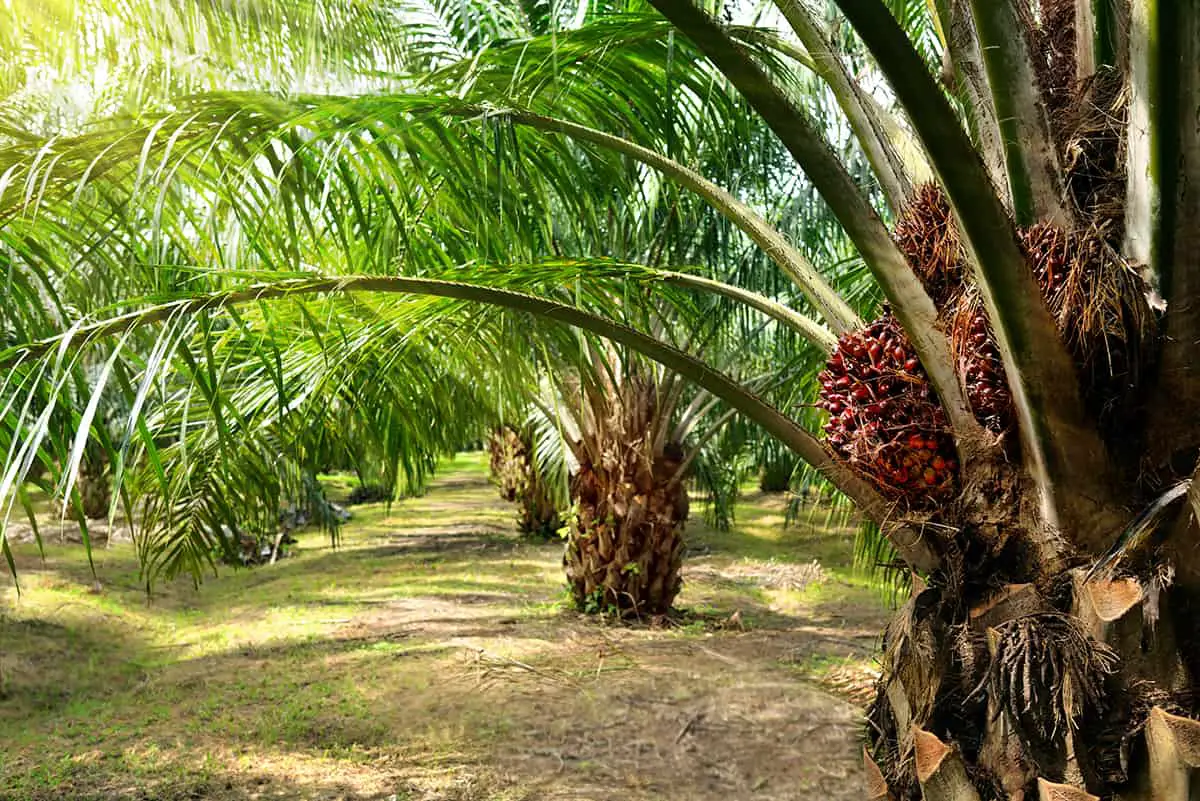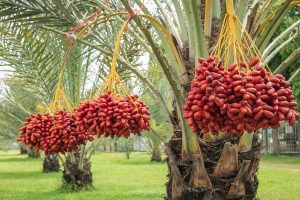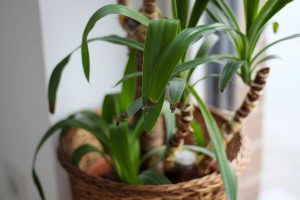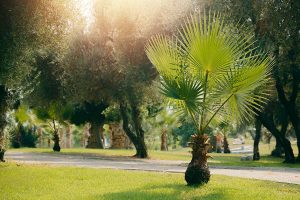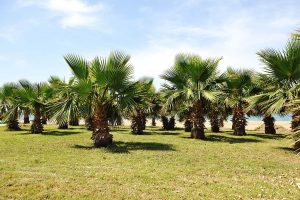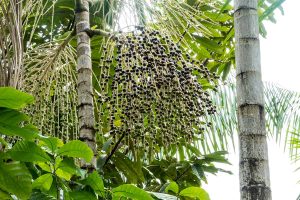Palm trees are predominantly planted for their ornamental appeal, but they can also offer other benefits. They work particularly well at providing shade in small areas, where a large tree with a branching crown would take up too much space.
Here we look at some of the best types of palm that can be used to create shade, and how to care for them.
Table of Contents
Best Palms to Create Shade
Arikury Palm (Syagrus schizophylla)
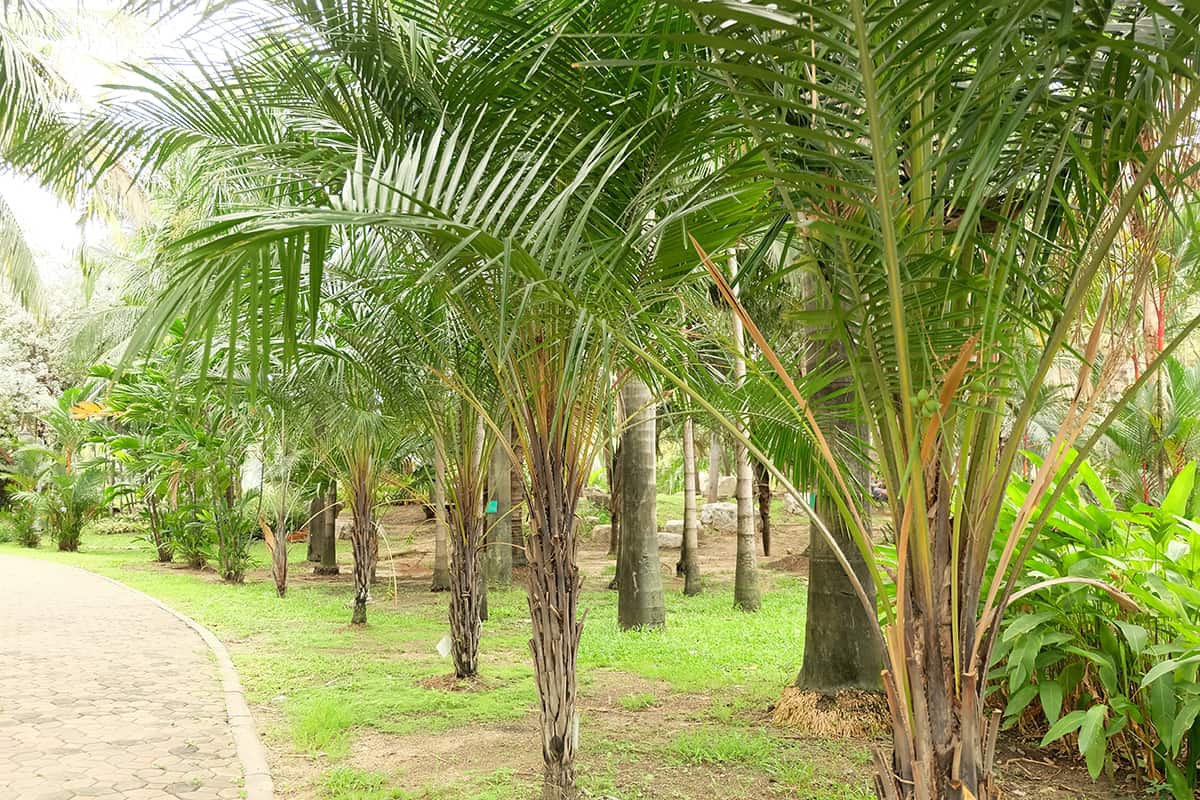
The Arikury Palm is a dwarf type of palm tree that will grow to maximum heights of just 6 to 10 feet. It is ideal for creating shade because it has a spreading crown with fronds that extend up to 6 feet in length. This means that it can provide a generous amount of shade even in a very compact space.
The Arikury Palm is very distinctive in terms of looks because it has jagged-toothed fronds and a trunk that is covered in spiky leaf bases which have been left behind as the palm gains height. The trunk has given rise to the common name for this palm of ‘Parrot Palm’.
It can be grown outside in USDA hardiness zones 9 to 11, and will produce attractive yellow flowers at the end of long stems. The palm is slow growing and doesn’t require much in the way of maintenance. The soil of the plant should be kept moist but not wet, which will mean watering the palm twice a week during dry spells, but otherwise, it needs little attention.
Date Palm Tree (Phoenix dactylifera)
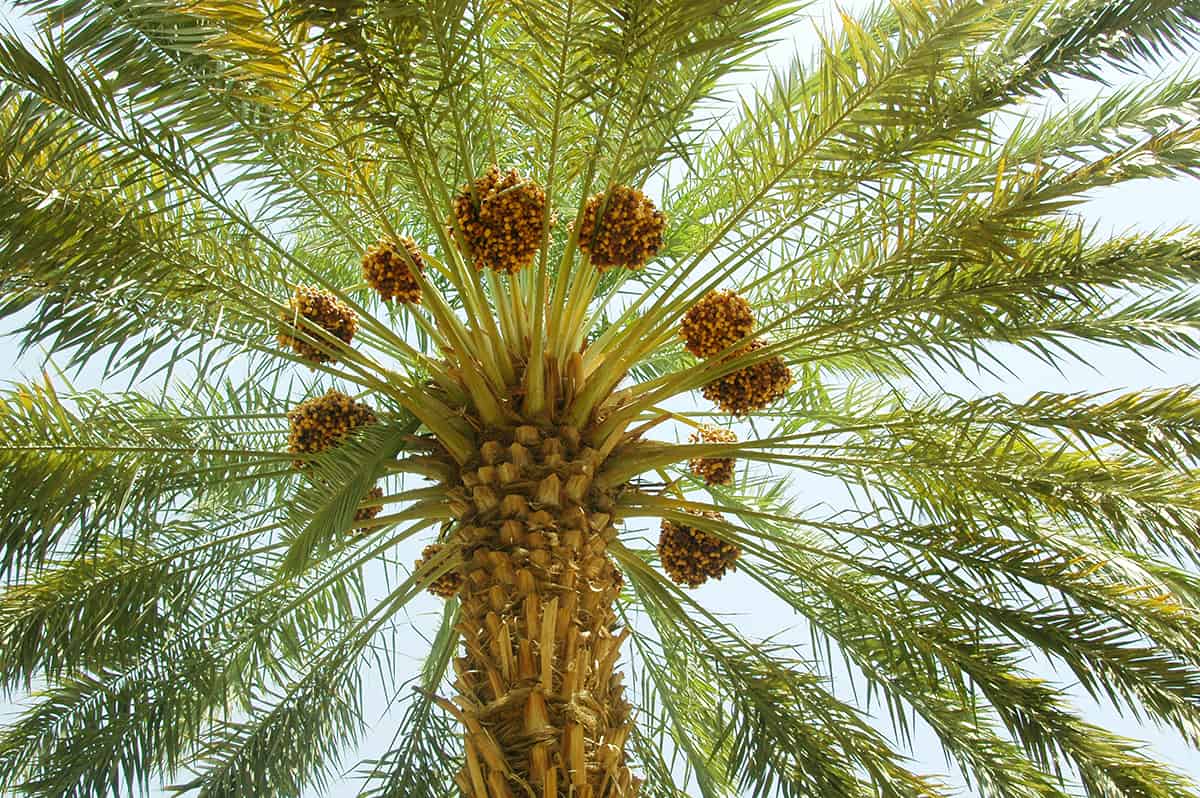
The Date Palm is a tall species of palm which is believed to be native to the Middle East. It is cultivated for the heavy clusters of fruit it produces, which are a type of drupe known as dates. Dates are sweet and sticky and are used across the world in cooking, desserts, and snacking.
The Date Palm can also be grown to create shade since it produces massive fronds which spread outwards in gentle arches. The tree will typically reach heights of around 70 feet, while the fronds can grow to 20 feet in length. The impressive crown on the Date Palm can span as much as 30 feet in width, which will be great for providing a dense area of shade. This palm requires full sun, and its soil should be moist and well-draining.
Oil Palm (Elaeis guineensis)
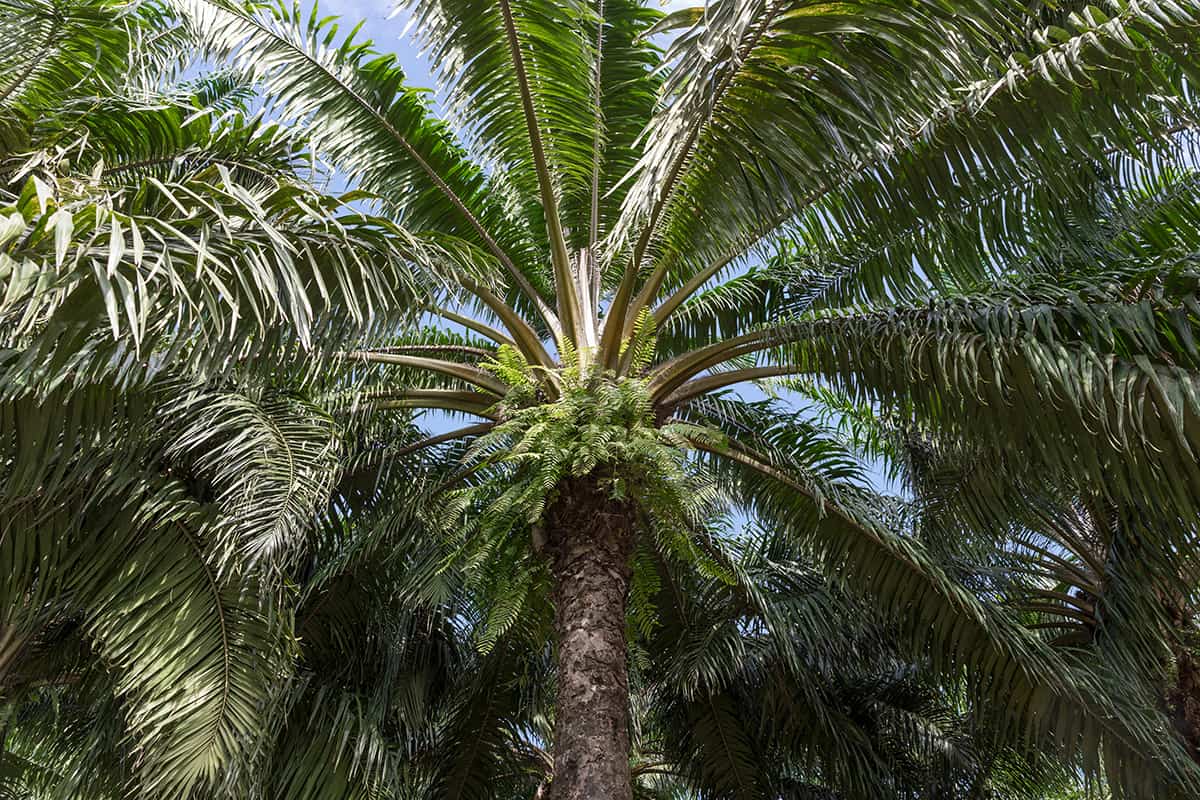
The Oil Palm is a medium to tall type of palm, growing to typical heights of around 60 feet. The crown of this tree is dense and extensive in size, with a single pinnate frond measuring up to 16 feet long. This makes it a good choice for creating shade for smaller trees and shrubs which could be planted beneath it.
The Oil Palm is native to western Africa, and as such is accustomed to consistently warm temperatures. It can grow outside in USDA hardiness zones 10 to 12, where the climate is appropriately hot. In its native habitat, the Oil Palm tree typically grows alongside streams and on riverbanks where the soil is moist and doesn’t drain well.
As a result, these plants thrive in wet environments, and they are not particularly prone to root rot, even when grown in soggy or waterlogged soils. They need plenty of moisture to thrive, so plant these palms in a climate that receives heavy rainfall.
Guadalupe Palm (Brahea edulis)
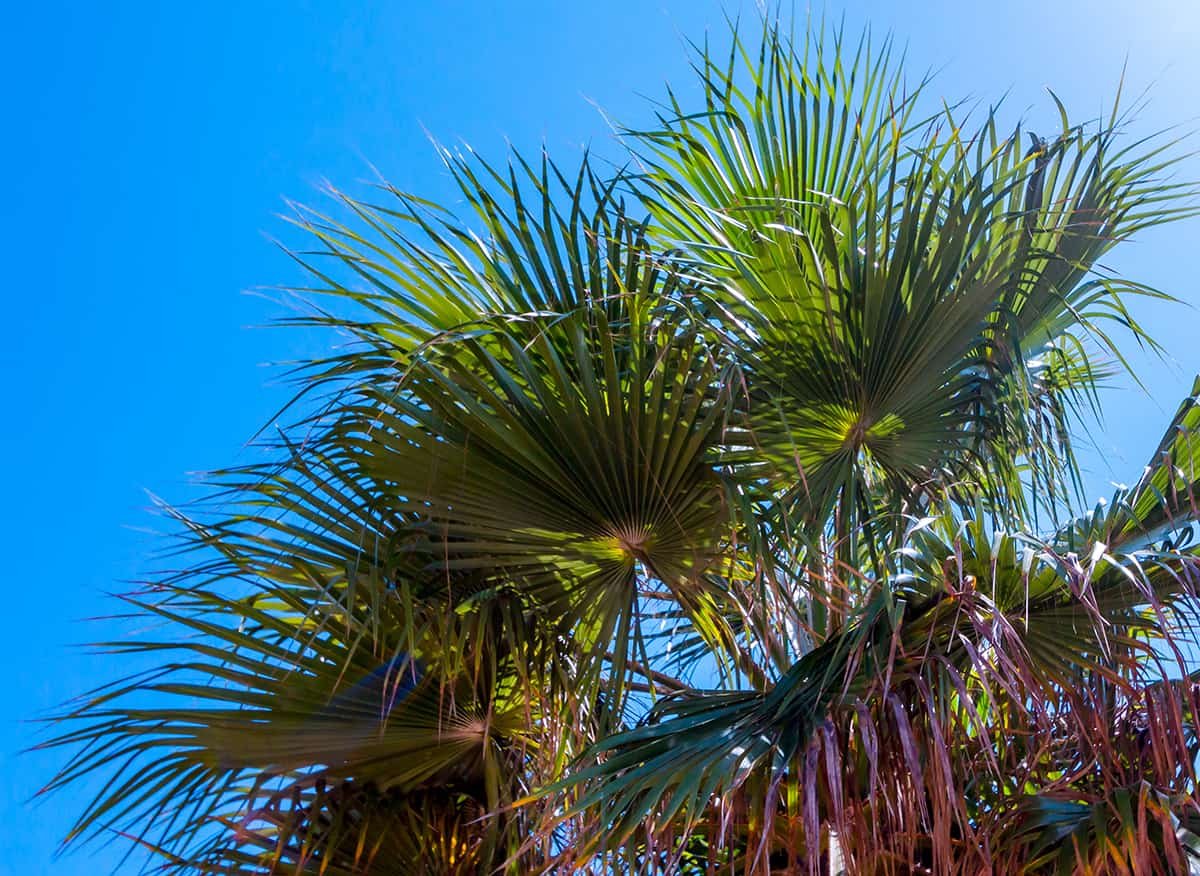
This palm is named after the location it is native to, which is Guadalupe Island off the coast of Mexico. It is a low-growing palm that will reach heights of between 30 and 40 feet. The crown of this palm is made up of a dense cluster of stems each spread out with stiff fan-shaped fronds at the end.
The result is a spiky-looking crown, which is very striking aesthetically, but it also makes for creating a good amount of shade. The Guadalupe Palm is widely cultivated as an ornamental palm in California, for both of these reasons. In summer, the palm produces pale yellow flowers which develop into black fruits with sweet, pulpy flesh.
The tree requires full sun to thrive and should be grown in USDA hardiness zones 9 to 11. Unlike most palms, it is actually quite tolerant of drought, though it will look best when provided with plenty of moisture.
Bismarck Palm (Bismarckia nobilis)
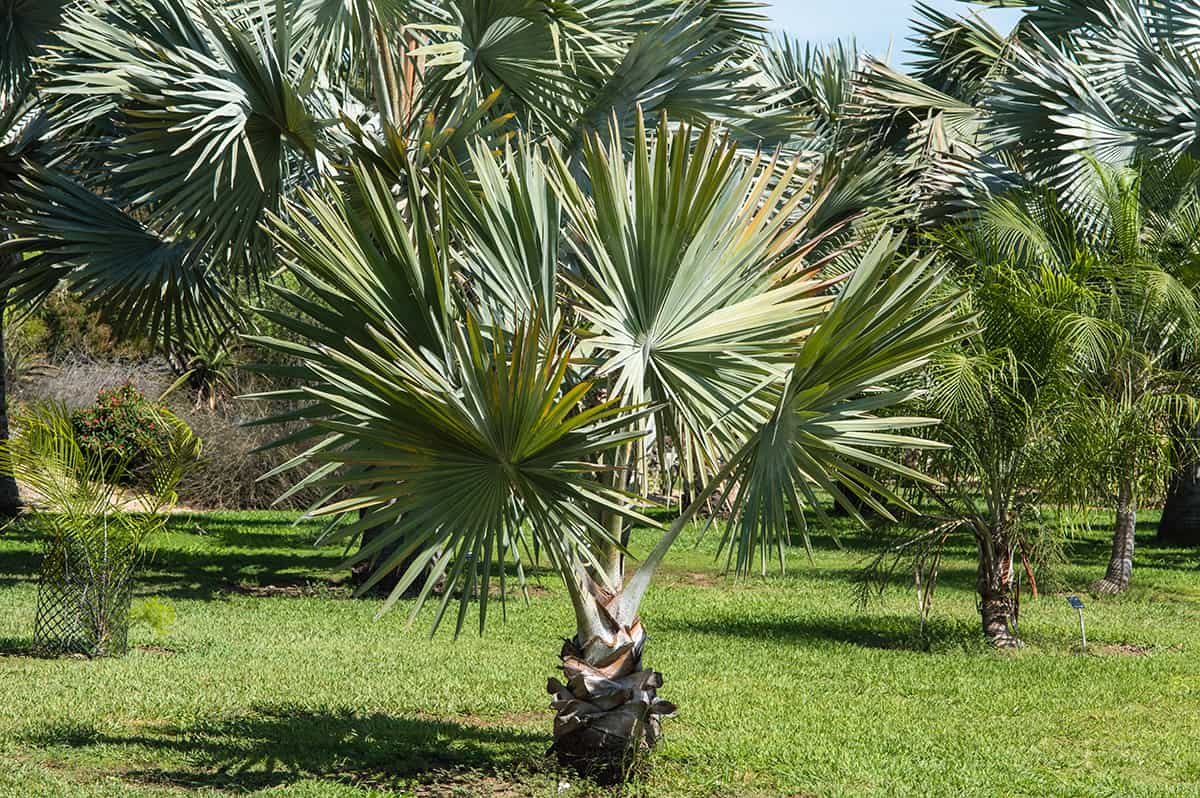
This palm is native to Madagascar but can commonly be seen throughout Florida, California, Texas, and Arizona. It produced stiff, fan-shaped fronds in a silver-blue color, making it striking to look at and easily identifiable. The stems which hold the fronds shoot out in every direction, creating a somewhat messy yet dense crown that can span up to 24 feet in width.
Each individual fan is quite sizable, typically at 4 feet in length and 4 feet in width, though they can reach up to 10 feet wide. The result of this is a dense and far-reaching crown which makes for excellent shade.
The Bismarck Palm grows to between 40 and 70 feet in height, in USDA hardiness zones 10 and 11. It is ideal for creating shade for small understory trees and shrubs, as well as shade for picnics and relaxing in gardens and parks.
Canary Island Date Palm Tree (Phoenix canariensis)
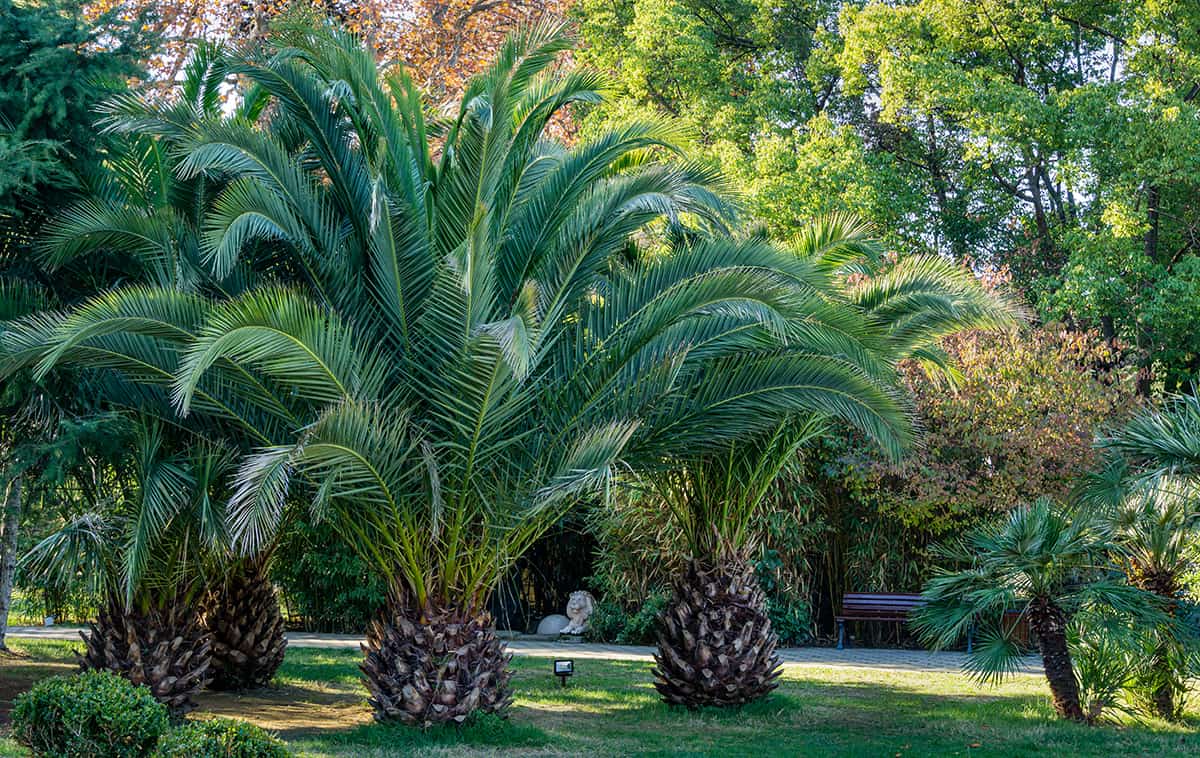
The Canary Island Date Palm Tree produces a dense sphere of foliage that sprays outwards from the end of the singular trunk, creating a look that resembles an exploding firework. Each tree will typically have around 100 fronds at any time, each of which can be up to 10 feet in length. It can grow up to 60 feet in height, and 40 feet in width, making it a great choice for providing shade.
The Canary Island Date Palm is commonly cultivated as a landscape tree across temperate climates in the United States, and it produces heavy clusters of red or yellow flowers which give way to edible date fruits.
Chinese Fan Palm (Livistona chinensis)
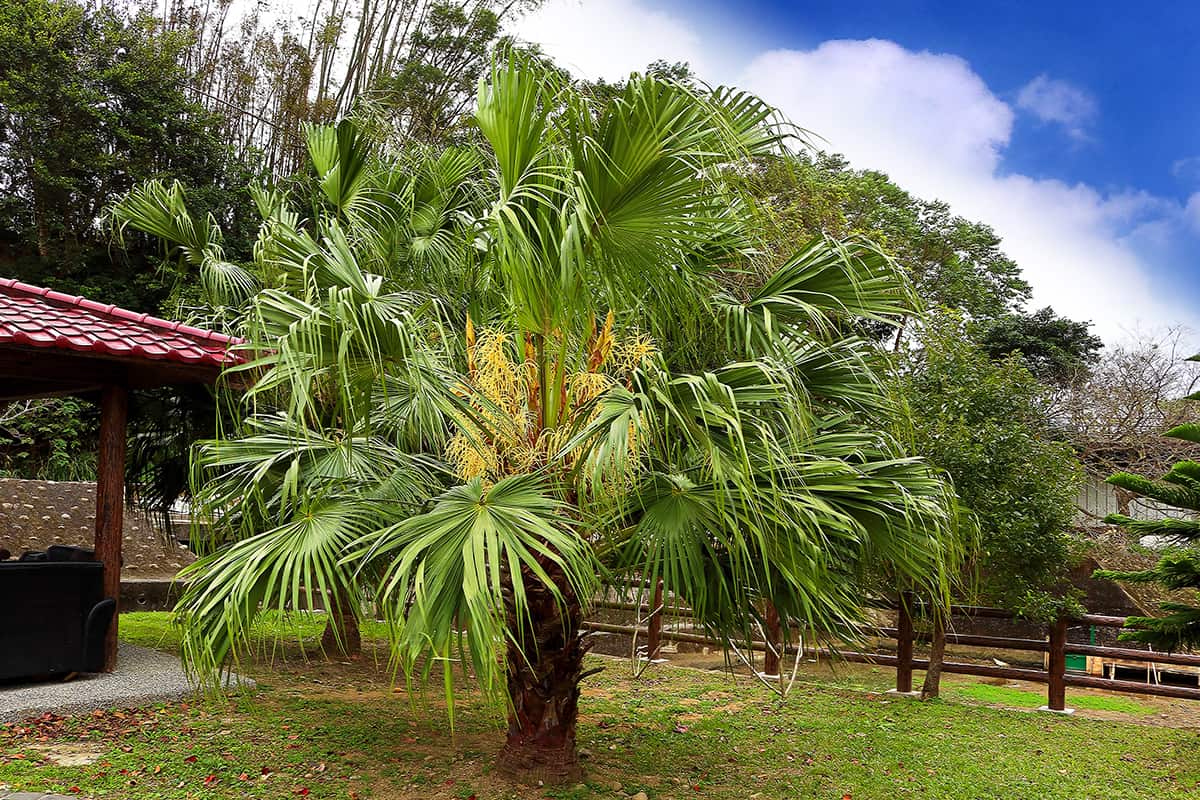
This is a medium-sized palm, which will grow in USDA hardiness zones 9 to 11. Each tree produces around 50 fronds, which are large, palmate, and coarse-textured. The fronds are positioned at horizontal angles, and the tips of the leaflets droop downwards in a vertical direction, creating the look that each frond is dripping with water like a fountain.
The tree can grow up to 30 feet in height with a spread of 15 feet, allowing it to be useful as a shade tree in compact spaces. The tree is very ornamental, especially when in flower. During summer, the tree produces huge clusters of creamy white blooms which can span up to 6 feet in length. These will give way to dark blue fruits, which are also very showy.
If you are looking for a palm tree to provide shade that will survive in cooler climates, then the Chinese Fan Palm is a good choice. It is one of the more hardy palms, being able to withstand temperatures as low as 20 ºF. The palm is native to eastern Asia and grows best in a position of full sun, in a well-drained soil that is kept consistently moist.
